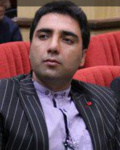| نویسندگان | Mohammad Yousefi,,,,,, |
|---|
| نشریه | Sports Biomechanics |
|---|
| شماره صفحات | 1-8 |
|---|
| نوع مقاله | Full Paper |
|---|
| نوع نشریه | چاپی |
|---|
| کشور محل چاپ | ایران |
|---|
| نمایه نشریه | ISI،JCR،Scopus |
|---|
چکیده مقاله
Flexion-relaxation phenomenon (FRP) is a well-knownphenomenon
in spinal extensor muscles. According to the literature, prolongedflexed posture leads to creepphenomenon and affects the active
and passive neuromuscular control of thespinal column. The purpose of this study was to investigateFRP occurrence in elite cyclists
that prolonged flexion posture is an integralpart of their professional life. Their muscles’ contractionpattern during forward bending was also compared. Electromyography(EMG) was recorded
during flexion andextension from standing position in thoracic
erector spinae (TES), lumbarerector spinae (LES) and gluteus maximus (Gluteus max) in 15 healthy male elite cyclists. In addition,
thekinematic data related to the trunk angles were simultaneously
recorded by amotion analysis system. Two-way ANOVA was used to
assess the effects of musclegroup and direction of movement on
maximum amplitude of EMG activity. Among 15 cyclists, FRP was
detectable in 60%, 87%and 73% of the participants in TES, LES and
Gluteus max, respectively, and happened between 74% and 82% of
the trunk flexion. There was nostatistically significant difference in
onset and offset of muscles FRP. Despite prolonghyper kyphotic
posture, FRP was identifiable in TES, LES and Gluteus max muscles
of elitecyclists
لینک ثابت مقاله
